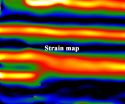The Commission for Environmental Cooperation (CEC) has released a comprehensive report on the changing face of industrial pollution in North America, covering the years 2005 through 2010. This is the first time an edition of the CEC's Taking Stock series, which gathers data from pollutant release and transfer registers (PRTRs) in Canada, Mexico and the United States, has analyzed North American pollutant information over an extended timeframe. To view the report, visit http://www.cec.org/library.
This volume of Taking Stock documents pollutant releases and transfers reported over the six-year period by approximately 35,000 industrial facilities across the region. Key findings include:
Total reported amounts of pollutants increased by 14 percent (from over 4.83 billion kilograms in 2005 to more than 5.53 billion kilograms in 2010), driven by releases to land (108-percent increase) and off-site disposal (42-percent increase). These increases reflect the introduction of Canada's more comprehensive reporting requirements on tailings and waste rock, as well as total reduced sulfur (TRS), resulting in more-complete reporting by the metal ore mining and oil and gas extraction sectors in Canada.
Most other types of releases and transfers declined over this period—including releases to air from electric utilities, mainly in the United States, which declined by 36 percent. Changes in regulations for fossil fuel–based power plants, along with facility closures, were the drivers of these decreases.
There was also a 38-percent decrease in releases to air of substances in four categories that have significant potential to cause harm to human health or the environment: known or suspected carcinogens; developmental or reproductive toxicants; persistent, bioaccumulative and toxic (PBT) substances; and metals.
By providing details at the country level, Taking Stock also highlights the gaps in the picture of North American industrial pollution that are created by differences in national PRTR reporting requirements and practices. For example:
Of the more than 500 pollutants reported across the region every year, only 60 are common to all three PRTRs.
Oil and gas extraction, a key sector which is tracked in Canada and ranks among the top sectors for reported releases and transfers each year, is not subject to reporting in the United States. Mexican data show a low level of reporting by oil and gas extraction facilities.
Compared to the United States and Canada, Mexican data show wider fluctuations in reporting between 2005 and 2010, reflecting the fact that Mexico's PRTR is relatively new.
"As a result of ongoing collaboration among the three countries' PRTR programs and the CEC, we are now able to track industrial pollutant releases and transfers across North America and over time to identify tendencies, as well as important gaps, in reporting. By establishing linkages between PRTR data and facilities' environmental sustainability efforts, Taking Stock supports the needs of the private sector, governments, citizens, and communities concerned with and affected by North American industrial pollution," said Irasema Coronado, CEC Executive Director.
Decreases in pollutant releases from pulp and paper mills—a look at the driving factors
This year's report also takes advantage of six years of North American PRTR data to examine releases reported by pulp and paper mills—which have consistently ranked among the top sectors for releases to air and water in North America. The data show that between 2005 and 2010, the sector's releases to air decreased by 19 percent and releases to water by 6 percent. Taking Stock identifies the drivers of these decreases, through data analyses, a survey of mills, and information from industry representatives. Among the findings:
A key driver of the decreases seen over this period has been the shutdown of several facilities in Canada and the United States (the two countries with the most reporting from this sector).
Emissions typically associated with pulp and paper mills include volatile organic compounds (VOCs), methanol, hydrogen sulfide, phosphorous, and formaldehyde, among others. However, some of these pollutants are not subject to reporting in one or more of the three countries (e.g., methanol in Mexico), creating challenges when analyzing the pollution profiles of pulp and paper mills.
While factors such as new emissions regulations have played a role in the decline in releases over this period, the report also shows that facilities' own environmental engagement, as well as customer demand for environmentally-friendly products, have had impacts—with mills adopting environmental management decisions that include pollution prevention and mitigation practices.
Explore North American PRTR data online
The data presented in the Taking Stock report can be searched using the CEC's Taking Stock Online tool, which is updated annually with data from North America's three PRTRs. It allows users to: explore information on industrial pollutant releases and transfers; generate reports in a variety of formats, including pie charts and spreadsheets; create maps and view them using Google Earth; and analyze PRTR data with respect to other information such as locations of watersheds, rivers, lakes, and population centers, using geospatial data from the North American Environmental Atlas.
INFORMATION:
About Taking Stock
The Commission for Environmental Cooperation publishes Taking Stock on a regular basis. The report presents analyses of data compiled from the three pollutant release and transfer registers (PRTRs) of North America: Canada's National Pollutant Release Inventory (NPRI), Mexico's Registro de Emisiones y Transferencia de Contaminantes (RETC), and the US Toxics Release Inventory (TRI). This year's edition includes data from 2005 through 2010, the most recent data available from all three countries at the time of writing. When interpreting the information in Taking Stock, readers are reminded that certain data might be reported differently in each country because of variations among national reporting requirements.
Taking Stock Online includes a full-featured database search tool and information about the data, and links to previous reports and related information. Explore the data now at: http://www.cec.org/takingstock.
About the CEC
The Commission for Environmental Cooperation (CEC) is an intergovernmental organization that supports the cooperative environmental agenda of Canada, Mexico and the United States to green North America's economy, address climate change by promoting a low-carbon economy, and protect its environment and the health of its citizens. The CEC is composed of three bodies: a Council, representing the governments of the three member countries, a Joint Public Advisory Committee (JPAC) that advises the Council and serves as a liaison with the public, and a Secretariat that supports the Council and JPAC and prepares independent reports. The CEC brings together governments, civil society, and businesses to develop innovative North American solutions to global environmental challenges. Find out more at: http://www.cec.org.
CEC initiatives are undertaken with the financial support of the Government of Canada, through Environment Canada; the Government of the United States of America, through the Environmental Protection Agency; and the Government of the United States of Mexico, through the Secretaría de Medio Ambiente y Recursos Naturales.



